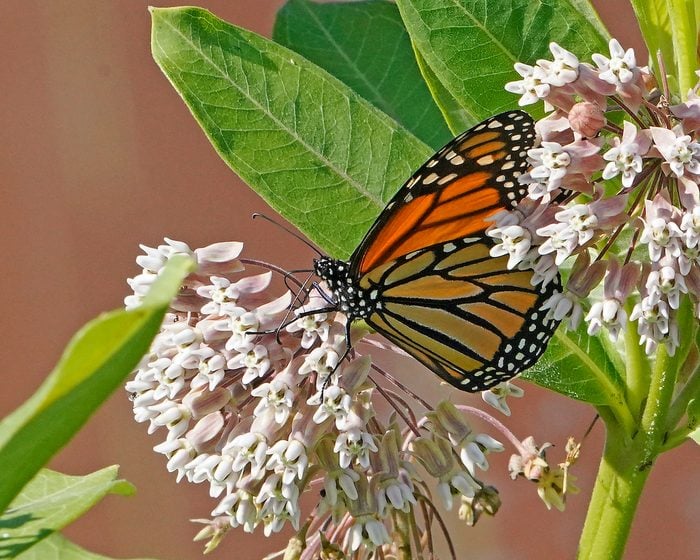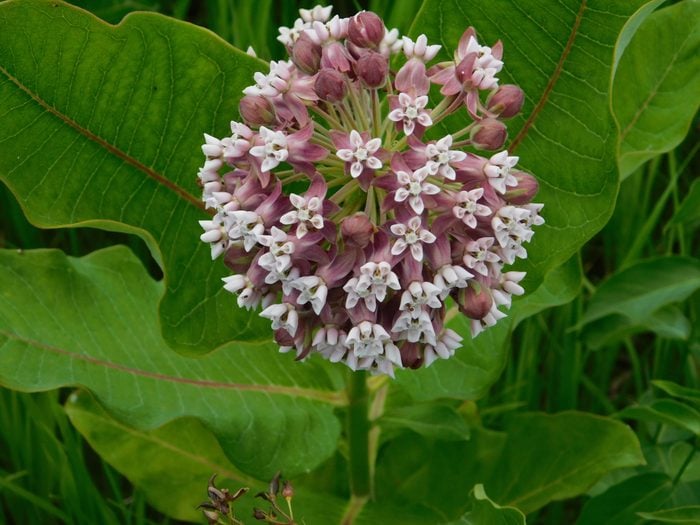
Common Milkweed
Asclepias syriaca, Zones 3 to 9
With a range covering 39 states, common milkweed is a taller summer bloomer for open spaces that requires full sun. Make sure to give it room to roam, however—because it will. Gardeners with small spaces should consider other less aggressive types of milkweed.
Why we love it: Globes of pink-purple stars shine on 3- to 5-foot tall plants from June through August.
Before you get started, check out the ultimate milkweed plant growing guide.
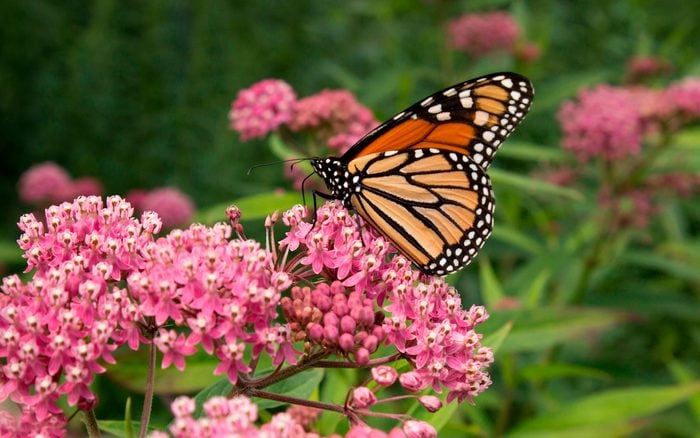
Swamp Milkweed
Asclepias incarnata, Zones 3 to 9
Striking magenta and white flower balls bloom summer through fall and prefer shade and moist soil.
Why we love it: Growing in 43 states, this adaptable 2- to 5-foot-tall plant is readily available. Also, swamp milkweed is not a romper.
Backyard Tip: Although bitter-tasting, all types of milkweeds are toxic to animals when ingested in large quantities. Avoid growing milkweed near livestock fields. The plants also contain sap that can be irritating to the skin, so wear gloves while pruning.
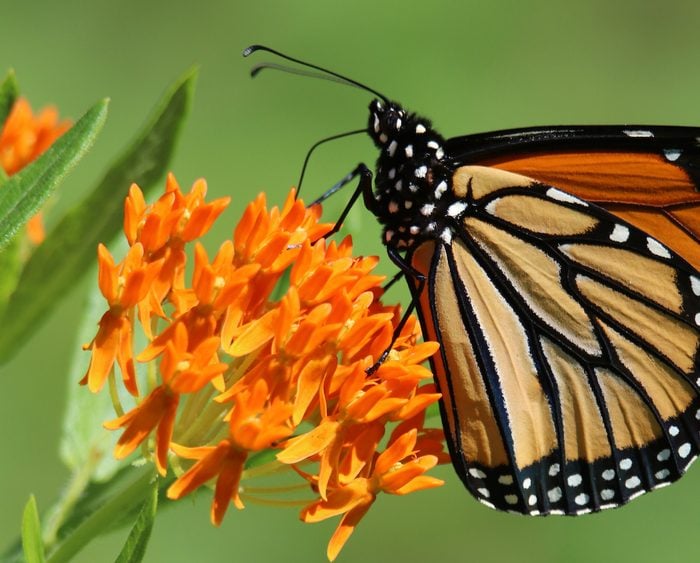
Butterfly Weed
Asclepias tuberosa, Zones 3 to 9
With an even broader range of 41 states, butterfly weed glows in warm golds and oranges. Its flat-topped clusters are showy all the way from May through September.
Why we love it: Well-behaved and compact at 1 to 2 feet tall, it’s easy to fit into any sunny, well-drained garden.
Does milkweed need full sun or shade to grow best?
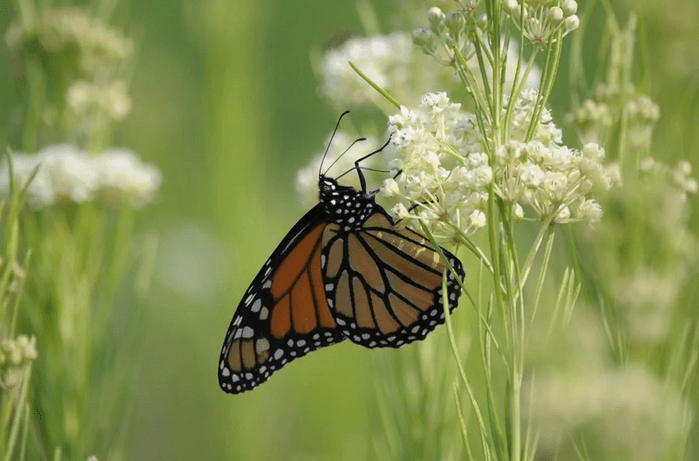
Whorled Milkweed
Ascelpias verticilata, Zones 3 to 9
This milkweed’s fine-textured needle-like leaves and pale cream summer flowers lend a refined air to this 2-foot by 2-foot prairie plant. This is one of the types of milkweed that prefers dry sunny conditions.
Why we love it: One of the first types of milkweed to emerge, it sustains monarch butterflies who arrive early.
Discover fascinating milkweed facts you should know.
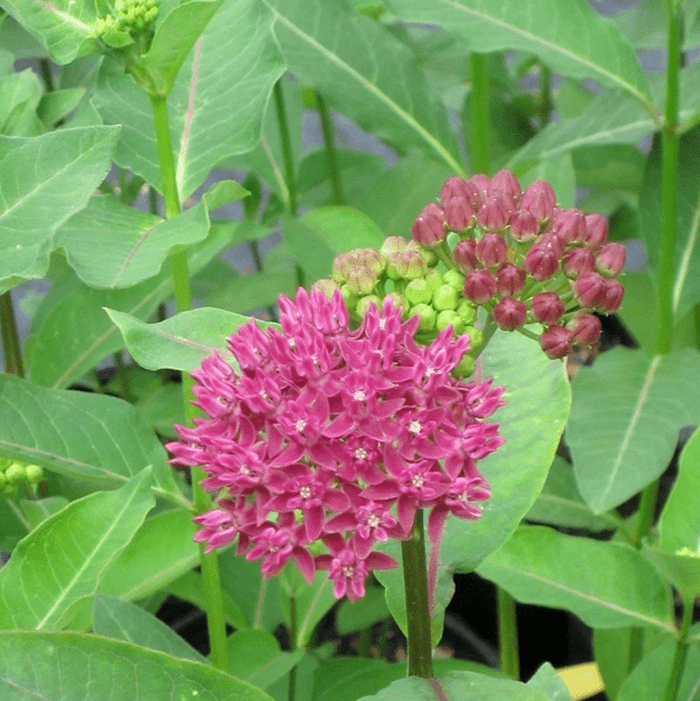
Purple Milkweed
Asclepias purpurascens, Zones 3 to 8
Averaging 2 to 3 feet tall and wide, it prefers consistent watering and loamy soil in partial sun. It can take time to establish, but it’s worth it.
Why we love it: That look-at-me rosy magenta is distinct among milkweeds and will be the jewel that sets off the rest of your collection.
Should gardeners remove milkweed bugs?
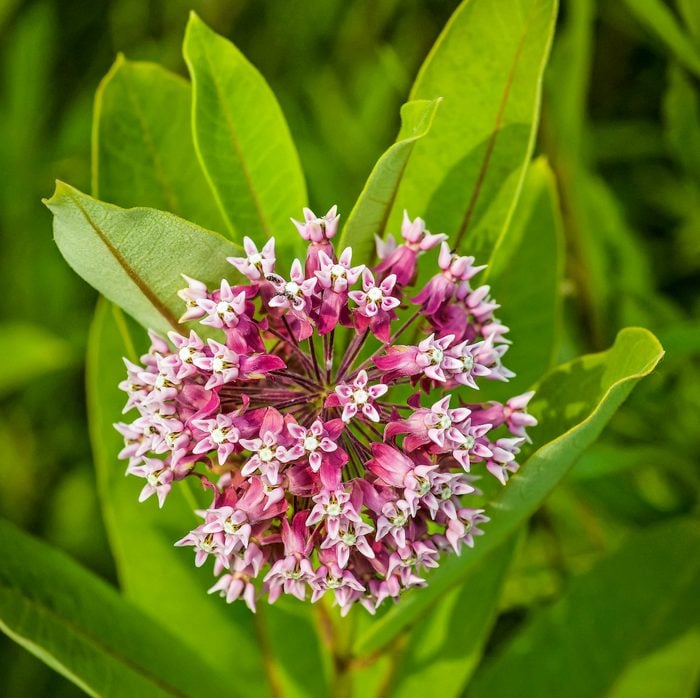
Sullivant’s Milkweed/Prairie Milkweed
Asclepias sullivantii, Zones 3 to 7
Looking like a bouquet of tiny pink columbines, this milkweed likes full sun and somewhat moist soil of any kind. It grows 2 to 3 feet tall and 1 foot wide.
Why we love it: It spreads more slowly than common milkweed but is just as lovely.
Is honeyvine milkweed an invasive plant?
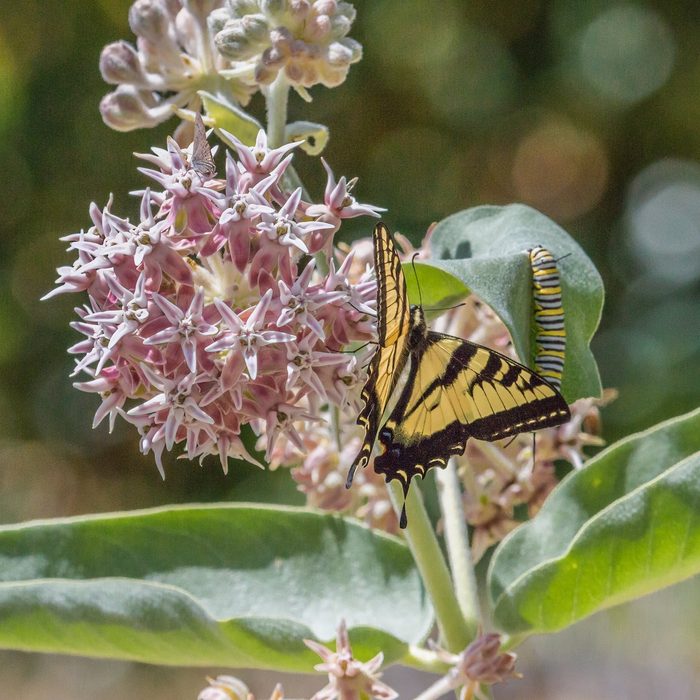
Showy Milkweed
Asclepias speciosa, Zones 3 to 9
A distinctive, robust choice reaching up to 3 feet tall, showy milkweed prefers dry, arid soils with good drainage. It is an excellent choice for gardeners in the western and southwestern U.S.
Why we love it: The star-shaped blooms are stunning and it is very drought tolerant.
Meet the milkweed tussock moth and caterpillar.
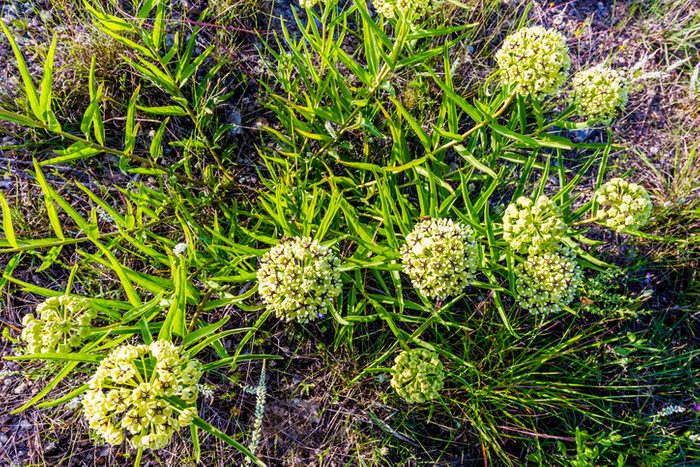
Antelope Horn Milkweed/Spider Milkweed
Asclepias asperula, Zones 5 to 9
Similar to but more intricate than A. viridis, which is also commonly called spider milkweed, this Southwest native stunner’s seed heads mimic horns and the plant reaches 2 feet tall by 2 feet wide. It prefers sun and sandy or clay soil.
Why we love it: The floral show lasts from March to October, getting better each year.
Learn how to collect milkweed seeds from pods.
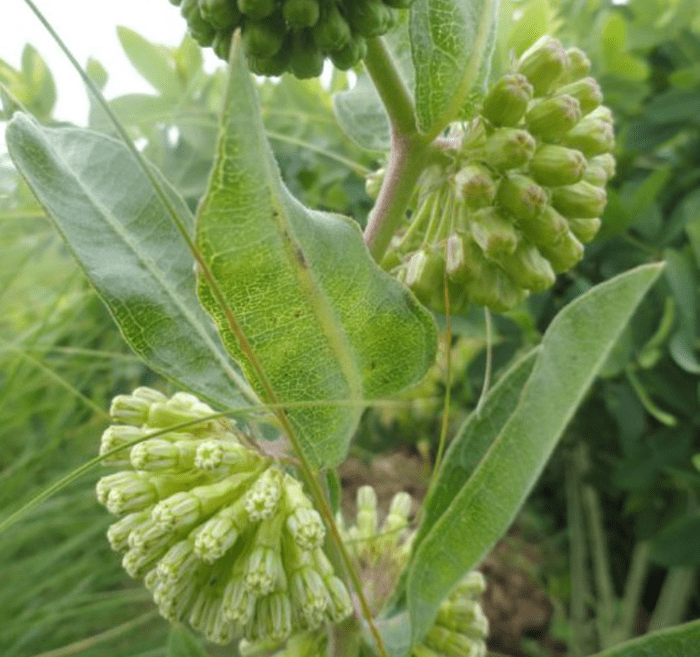
Short Green Milkweed
Asclepias viridiflora, Zones 3 to 9
A. viridiflora’s palest green flowers look more like a stylized allium than other types of milkweed. It prefers sandy or gravelly soil in hot, dry conditions.
Why we love it: Here’s another eye-catcher whose flowers reward close inspection—or sketching—and makes a nice edging plant at 1 foot tall and wide.
Learn how to get rid of aphids on milkweed plants.
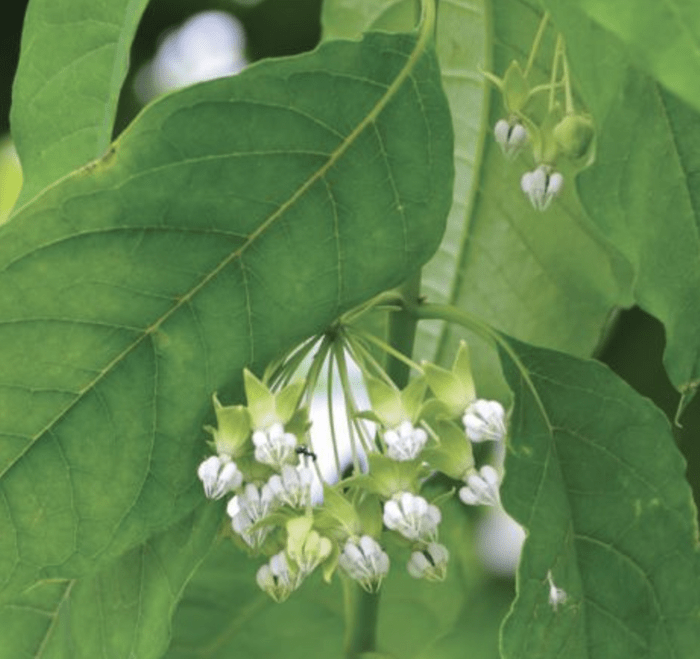
Poke Milkweed
Asclepias exaltata, Zones 4 to 7
This plant features drooping clusters of white or purple flowers that float on 3- to 5-foot-tall plants from May to August.
Why we love it: Poke milkweed is one of the most shade-tolerant types of milkweed, so give it a try if your gardens are more shady than sunny.
Next, enjoy these pretty pictures of milkweed flowers in bloom.

